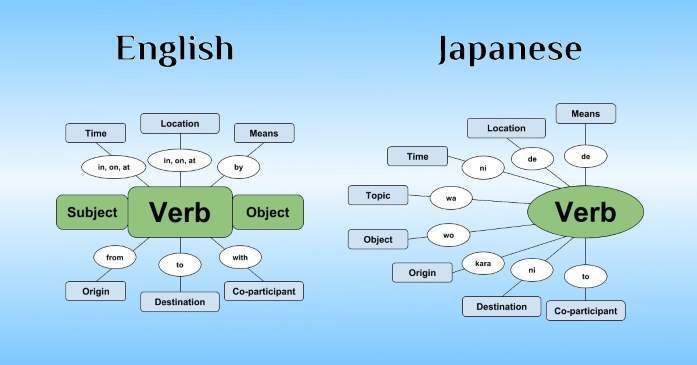Teacher’s Summary: In this essay, the student shares their experiences and challenges in learning Japanese. The piece explores how the differences in language patterns, such as word order, syllable timing, and the absence of articles, offer a new perspective on human communication. The student draws fascinating parallels between their own learning journey and the intricate structures of both English and Japanese, making it an insightful read for anyone interested in language learning. This essay beautifully illustrates the joys and hurdles of embracing a new language and encourages readers to appreciate the diversity and complexity of linguistic structures.
Japanese Language Patterns: A Personal Journey of Discovery

Introduction: My Language Learning Adventure
When I first decided to learn Japanese, I thought it would be a breeze. After all, I’d aced Spanish in my freshman year, so how different could another language be? Boy, was I in for a surprise! As I dove into my Japanese studies, I quickly realized that I was entering a whole new world of language patterns and structures. It was like trying to solve a puzzle where all the pieces seemed familiar, but the picture they formed was completely different from what I expected.
The Great Word Order Shuffle
The first major hurdle I encountered was the word order. In English, we’re used to the subject-verb-object (SVO) pattern. It’s as natural to us as breathing. “I eat sushi” rolls off the tongue without a second thought. But in Japanese? Hold onto your hats, because we’re in for a wild ride!
Japanese follows a subject-object-verb (SOV) pattern. At first, this threw me for a loop. I remember sitting in class, trying to wrap my head around saying “I sushi eat” instead of “I eat sushi.” It felt like I was speaking in riddles or trying to imitate Yoda from Star Wars!
One day, our Japanese teacher, Tanaka-sensei, asked me how I was feeling. She said, “Kenki desska?” I blinked, confused for a moment, until she explained that it literally translates to “(You) well are?” That’s when it clicked for me – Japanese wasn’t just rearranging words; it was rearranging my entire thought process!
Exceptions to the Rule: English’s Poetic Side
Of course, being the language nerd that I am, I couldn’t help but point out to Tanaka-sensei that English sometimes breaks its own rules too. I shared some examples like “One swallow does not a summer make” and “Great oaks from little acorns grow.” She was impressed, and we had a great discussion about how languages can bend their own rules for poetic or emphatic effect. It made me realize that even though Japanese and English seem worlds apart, they both have their quirks and exceptions.
The Rhythm of Language: A New Beat to Master
Just when I thought I was getting the hang of the word order, Tanaka-sensei introduced us to another mind-bending concept: syllable timing. She explained that Japanese is a syllable-timed language, where each syllable gets roughly the same amount of stress. It was like trying to learn a new dance rhythm after years of waltzing.
I remember practicing Japanese sentences, trying to give each syllable equal weight. “To-ki-yo-ni-su-n-de-i-ma-su” (I live in Tokyo). It felt robotic at first, so different from the natural rise and fall of English.
Speaking of English, I learned that it’s a stress-timed language. We put different emphasis on syllables within words and even stress some words more than others in a sentence. Function words like “the” and “of” often get swallowed up in our speech. It was fascinating to realize that I’d been doing this my whole life without even noticing!
The Missing Pieces: Articles and Prepositions
Another curveball Japanese threw at me was the absence of articles and the different treatment of prepositions. In English, we’re so used to saying “the book” or “an apple” that it feels naked to just say “book” or “apple.” And don’t even get me started on prepositions! In Japanese, these little words that give us so much trouble in English are treated with the same respect as any other word in the sentence.
I remember joking with my friend Alex, who’s taking French, about how lucky he is. “At least you get to keep your ‘the’ and ‘a’!” I said. “I have to learn a whole new way of thinking about objects!”
Conclusion: Embracing the Challenge
As I continue my Japanese journey, I’ve come to appreciate these differences not as obstacles, but as windows into a new way of thinking. Sure, it’s challenging, and there are days when I feel like my brain is tied in knots. But there’s something incredibly exciting about rewiring your brain to understand and produce a completely different language pattern.
Learning Japanese has taught me more than just a new language; it’s shown me how diverse and beautiful human communication can be. It’s made me more aware of the intricacies of my own language and given me a deeper appreciation for the challenges faced by non-native English speakers.
So, to anyone thinking about learning Japanese, I say go for it! Yes, it’s tough. Yes, it will challenge everything you know about language. But trust me, the moment you successfully string together your first complex Japanese sentence, feeling the rhythm and flow of this beautiful language, you’ll realize it was all worth it.
As for me, I’m already dreaming of the day I can visit Japan and put my skills to the test. Who knows? Maybe I’ll even be able to have a conversation about the intricacies of language patterns – in Japanese! Now that would be a true “kenki desu” (I am well) moment!
Work Cited:
- Shibatani, M. (1990). The Languages of Japan. Cambridge University Press.
- Tsujimura, N. (2007). An Introduction to Japanese Linguistics. Blackwell Publishing.
- Hinds, J. (1986). Japanese: Descriptive Grammar. Routledge.
- Kuno, S. (1973). The Structure of the Japanese Language. MIT Press.
- Cambridge University Press. (2010). Japanese Language Patterns.